Last week, NHSN members set out in search of bees and Bee Orchids at Silverlink Biodiversity Park. Here, James Common takes a look back at what they discovered.
Last Sunday, a group of NHSN members set out in search of bees and wildflowers at Silverlink Biodiversity Park in North Tyneside – a new site for many of those in attendance. With wonderful sunny weather, there was certainly lots to see and over the course of two hours, naturalists were lucky to encounter a diverse range of species.
Insects
Recording for the North East Bee Hunt, attendees were delighted to encounter two of this year’s more elusive target species. First, a Fork-tailed Flower Bee was spotted in the car park, and later local entomologist, Louise Hislop, identified a male Red-tailed Cuckoo Bee feeding on Oxeye Daisy. Other interesting bees noted included both Patchwork and Willughby’s Leafcutter Bees, as well as Vestal Cuckoo Bee. Owing to an abundance of Viper’s-bugloss, crane’s-bill and other wildflowers, the more common bumblebee species were well represented too, with sightings including Early, Tree and White-tailed Bumblebees.
Whilst looking for bees, it was exciting to observe a number of quite convincing bee mimics. In the car park, the striking Volucella bombylans was discovered and later, attendees observed Narcissus Bulb Fly. The good weather certainly brought about the hoverflies with other species recorded including Heliophilus hybridus and Pellucid Fly.
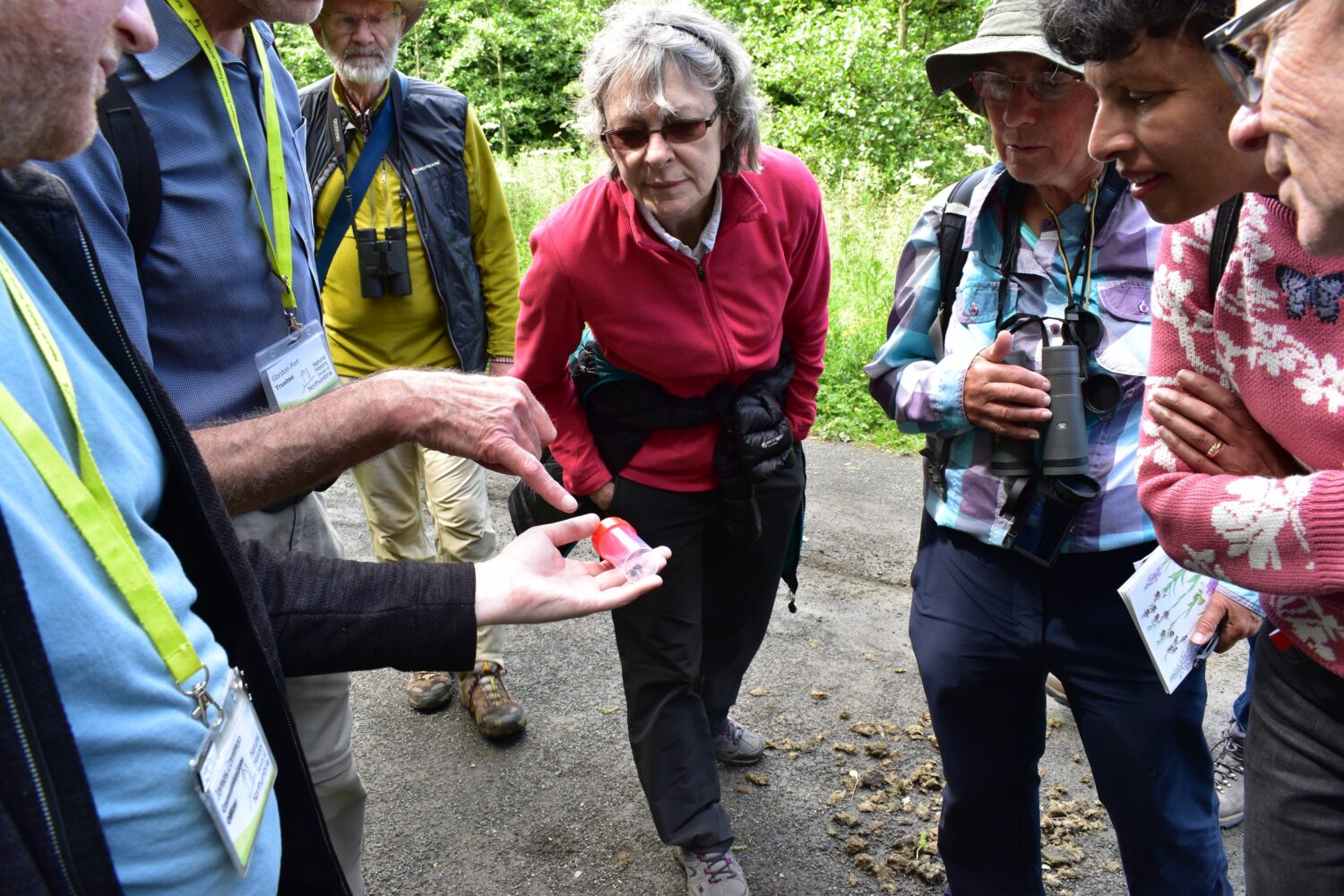
A closer look at a Pellucid Fly 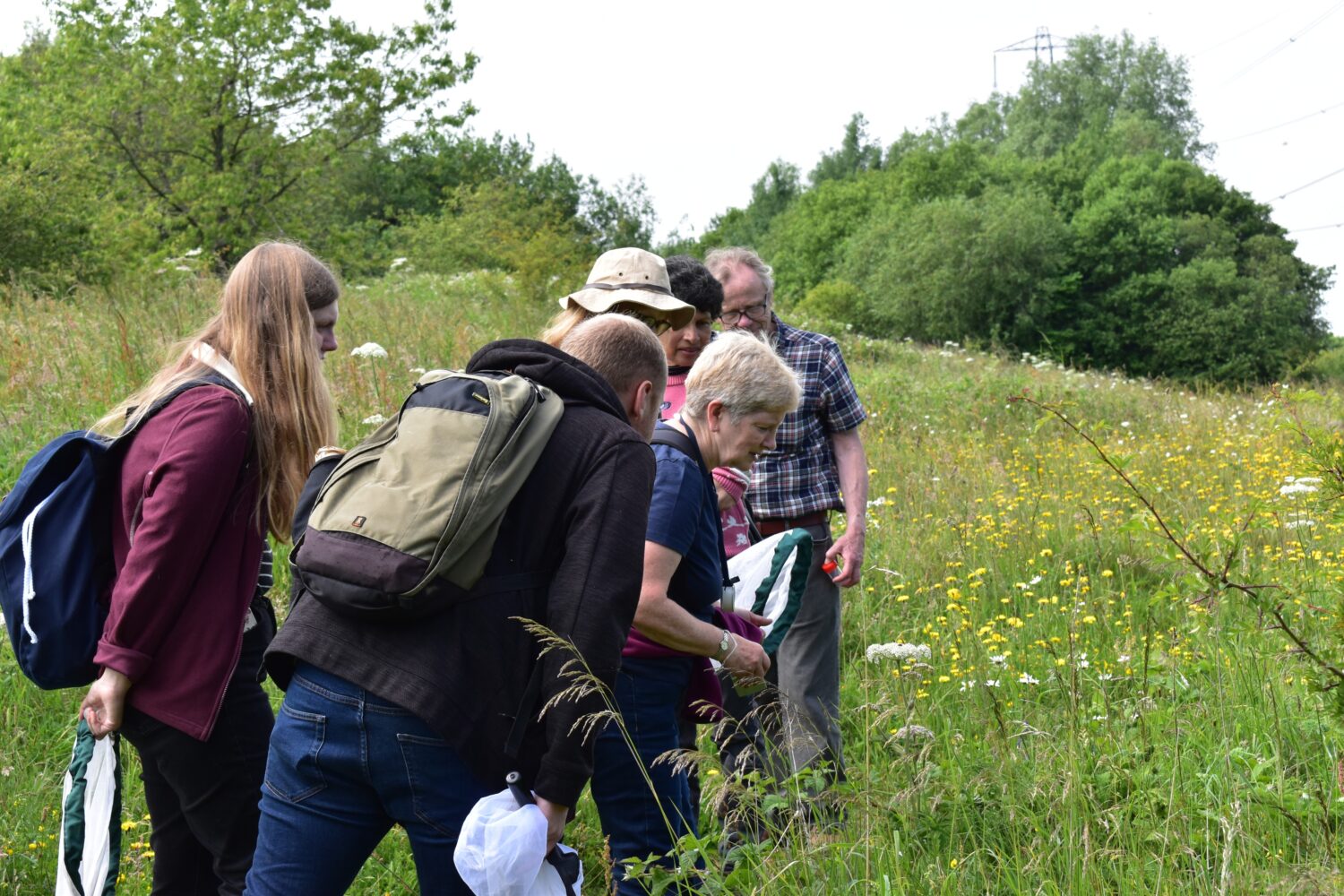
Local entomologist, Louise Hislop, looking closer at a small solitary bee
Owing to the warm weather, it was also great to encounter a range of moths and butterflies. On the moth front, NHSN member, Neil Pont, photographed Latticed Heath and Blackneck Moth – a rare species in North East England – was an exciting find in one of the grassy areas. The real start of the show here, however, was definitely the Narrow-bordered Five-spot Burnets with many seen throughout the day.
Butterflies were far from numerous but a number of interesting species were enjoyed, including Large Skipper, Common Blue, Meadow Brown, Ringlet and Small Tortoiseshell.
Finally, around one of the ponds present on site, attendees enjoyed the sight of Broad-bodied Chasers at roost on the pool-side vegetation. Three species of damselfly were also spotted throughout the afternoon, with Azure Damselfly being a highlight for many.
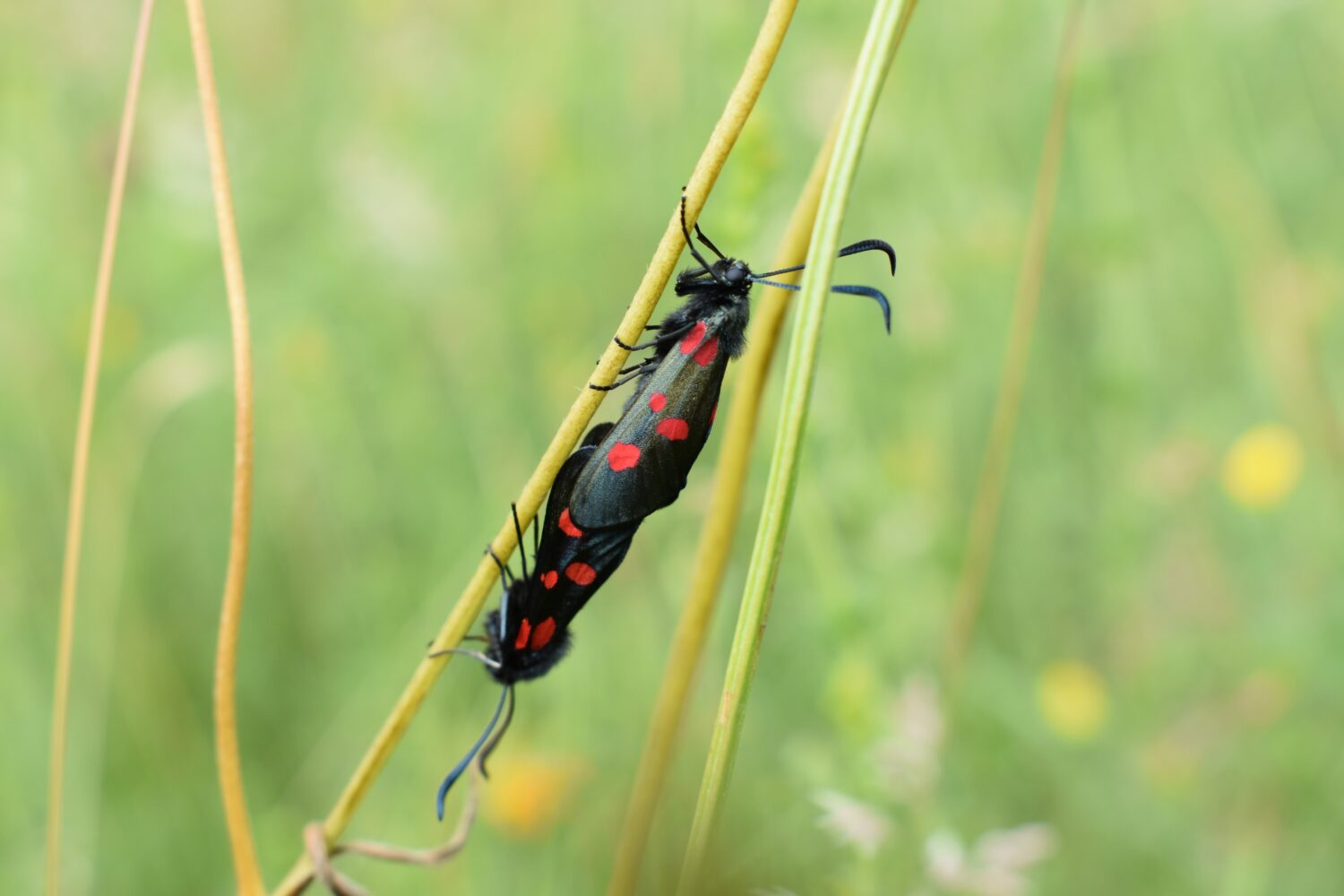
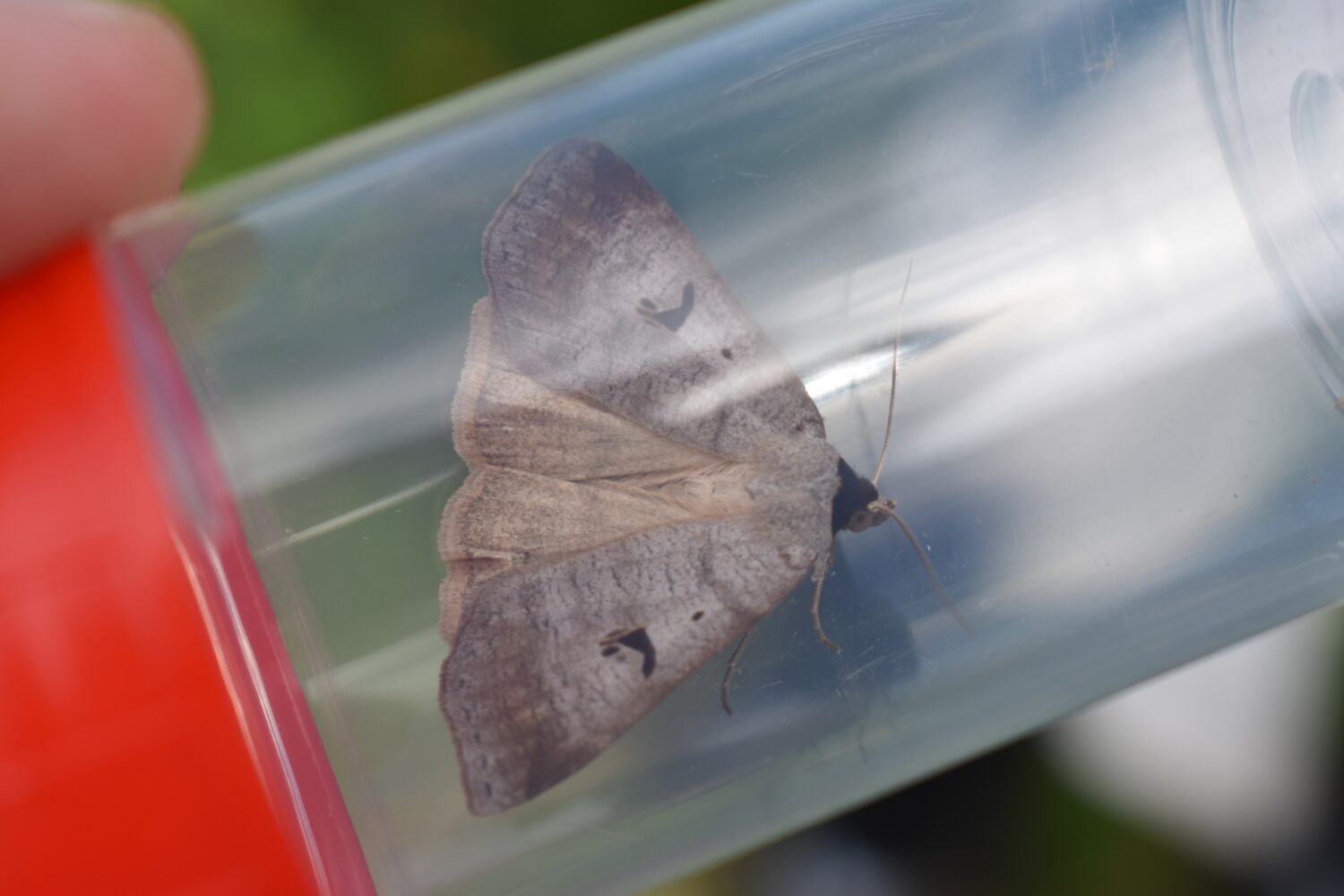
Botany
Silverlink is widely known as a great site at which to observe Bee Orchids. While their numbers can vary substantially from year to year, 2021 seems to be a bumper season with many seen across the site, including in some unexpected locations. Whilst the grassland areas held good numbers, it was also interesting to observe orchids growing among the rough grassland by a busy public footpath. Other species seen included Common Spotted Orchid and Northern Marsh Orchid – the latter apparently coming to the end of their flowering season.
Other floral highlights from the trip included Yellow-wort, Quaking Grass, Salad Burnet, Bladder Campion and a good sized exampse of blooming Viper’s-bugloss. NHSN member, Pru Hamed, identified Fairy Flax and, by one of the larger ponds on site, the blooms of Water Plantain were enjoyed.
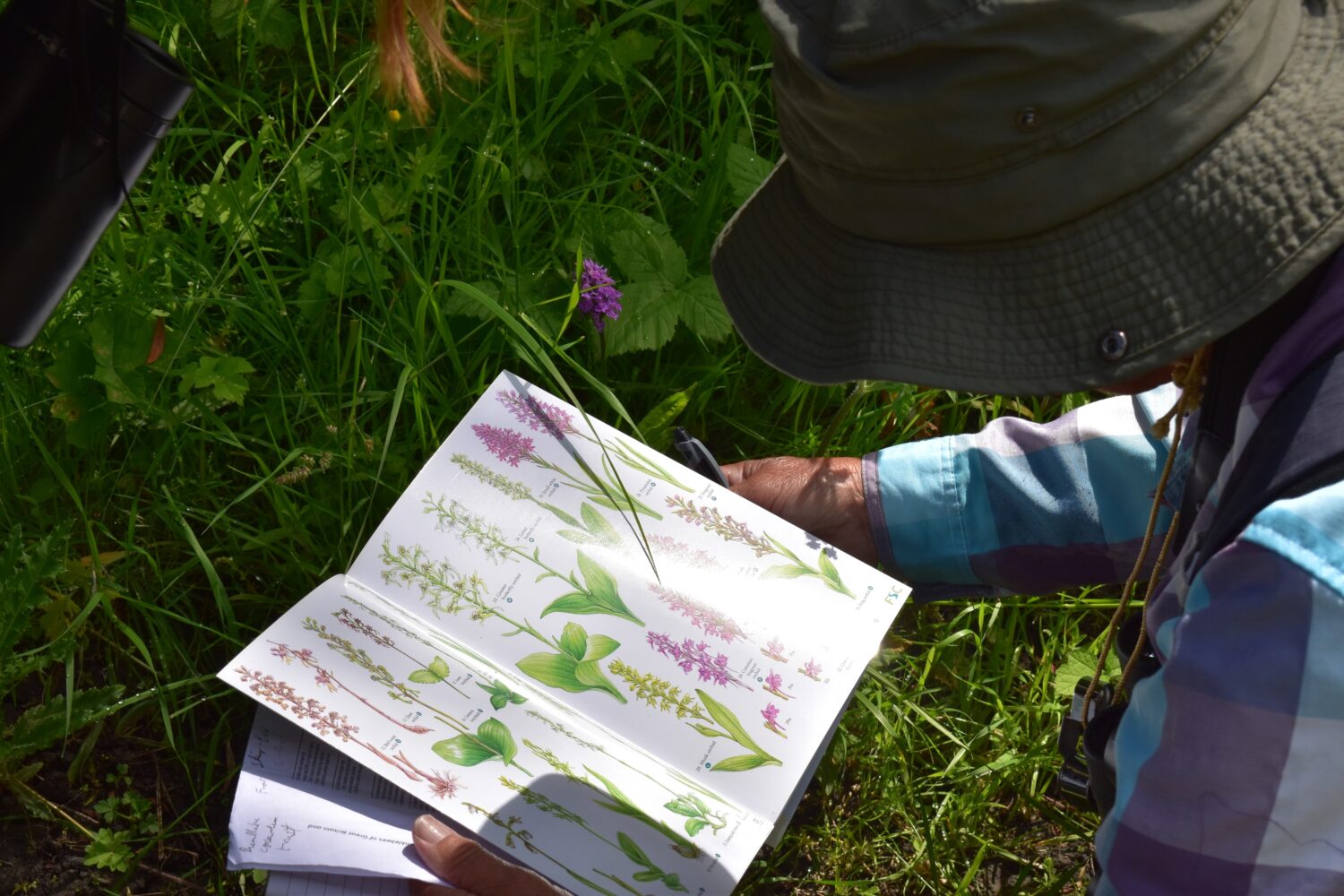
Identifying a problematic orchid 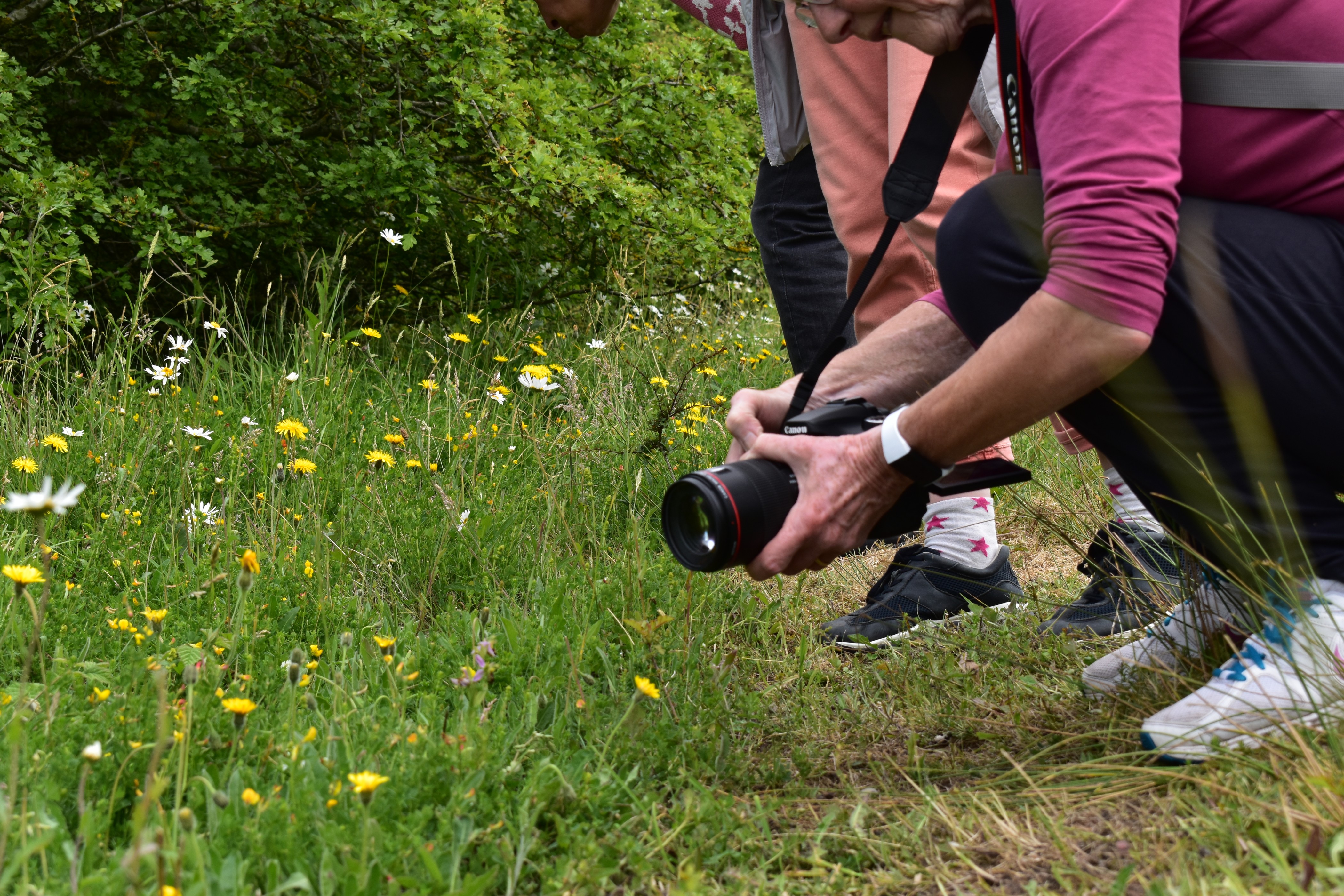
Bee orchids – through the lens